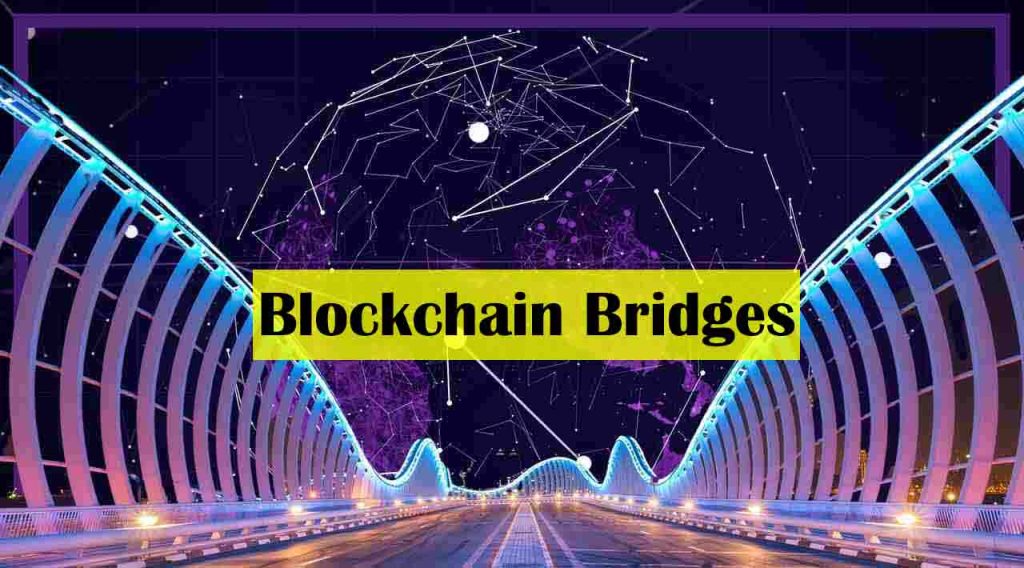Blockchain bridges are functionally equivalent to conventional bridges. A blockchain bridge joins two distinct blockchain ecosystems in the same way that a real bridge connects two points on the ground. With the use of bridges, blockchains may share data and assets with one another.
To what end do bridges serve?
Every blockchain has certain fundamental constraints. Rollups are a need for Ethereum’s ability to expand and meet growing demand. Solana and Avalanche, on the other hand, are L1s that take a different approach to design in order to provide better throughput, but at the expense of centralization.
However, every blockchain evolves separately, thus they all have their own rules and consensus procedures. The lack of inter-blockchain communication and inter-blockchain token mobility is a direct result of this. Bridges allow blockchains to share data and coins.
Connecting points like bridges provide for:
• exchange of assets and data across blockchains (e.g. swap BEP20 to ERC20)
• allowing dapps to take use of each network’s unique features
• people to get on emerging platforms and reap the rewards of alternative ledgers.
• developer community for blockchain ecosystems to work together and create innovative user-facing platforms.
Bridge usage scenarios
Some examples of why a bridge could be useful are as follows:
1. Lessening the cost of transactions
For example, you have Ethereum Classic (ETH) on the Ethereum Mainnet, but you’d want to save money on transaction fees, so you may try out more decentralized applications (dapps). Lower transaction costs are available when you bridge your ETH from the Mainnet to an Ethereum L2 rollup.
2. Alternative blockchain applications
If you have been using Aave to lend USDT on the Ethereum Mainnet, but the interest rate for lending USDT using Aave on Polygon is greater, you might consider making the switch.
3. Analyze the ecosystems of blockchain technology
If you hold Ethereum Classic (ETH) on the Ethereum Mainnet and are interested in testing out any alternative L1 dapps, you may do so with your ETH. Your ether may be moved from Ethereum Mainnet to the alternative L1 network through a bridge.
4. Keep your crypto assets in the country you were born in.
Imagine you want to purchase Bitcoin (BTC) using mainnet Ether (ETH) but don’t have any. Wrapped Bitcoin lets Ethereum users buy Bitcoin tokens (WBTC). WBTC is a Bitcoin-based ERC-20 token on Ethereum. Native Bitcoin holdings need an Ethereum-to-Bitcoin bridge. Bridges convert WBTC to BTC. Bitcoin for Ethereum DeFi transactions is another alternative.
Design Categories for Bridges
There is a wide variety of bridge styles and details available. There are two main types of bridges: those that can be trusted and those that cannot.
Validated Bridges
• When it comes to functioning, trusted bridges must rely on some other body or system.
• Assumptions of confidence have been made about the safekeeping of monies and the integrity of the bridge. The reliability of the bridge operator is mostly based on user trust.
• Users must cede management of their digital holdings.
Totally Unsafe Bridges
• Smart contracts and algorithms power the operation of trustless bridges.
• They don’t rely on any third parties for security, making the bridge and the blockchain it connects equally safe.
• Users may keep full control of their money while using trustless bridges since they use smart contracts.
Simply said, trustworthy bridges are based on trust assumptions, where you can safely converting ERC20 to BEP20. whereas trustless bridges are trust-minimized since they don’t add any additional trust assumptions to the underlying domains.
